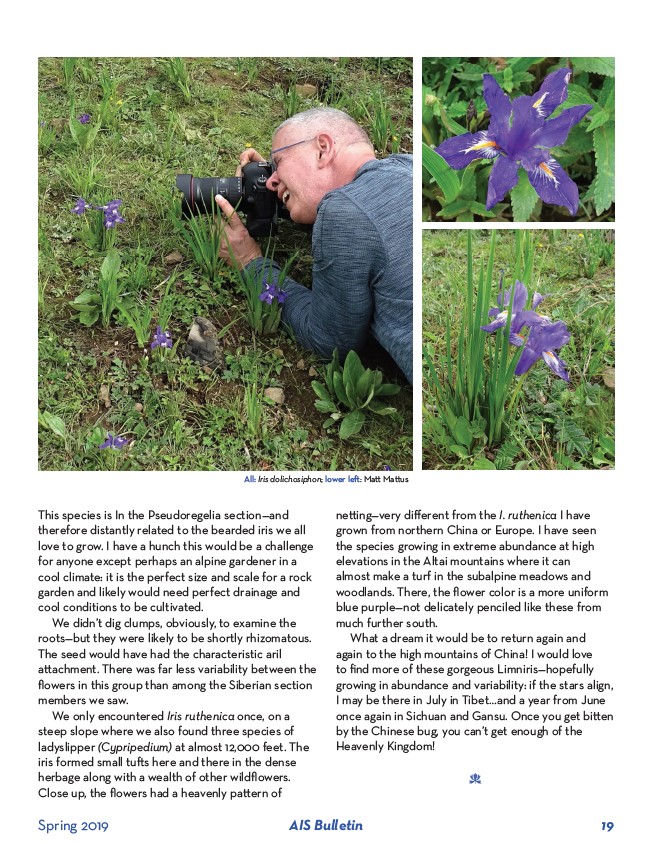
All: Iris dolichosiphon; lower left: Matt Mattus
This species is In the Pseudoregelia section—and
therefore distantly related to the bearded iris we all
love to grow. I have a hunch this would be a challenge
for anyone except perhaps an alpine gardener in a
cool climate: it is the perfect size and scale for a rock
garden and likely would need perfect drainage and
cool conditions to be cultivated.
We didn’t dig clumps, obviously, to examine the
roots—but they were likely to be shortly rhizomatous.
The seed would have had the characteristic aril
attachment. There was far less variability between the
flowers in this group than among the Siberian section
members we saw.
We only encountered Iris ruthenica once, on a
steep slope where we also found three species of
ladyslipper (Cypripedium) at almost 12,000 feet. The
iris formed small tufts here and there in the dense
herbage along with a wealth of other wildflowers.
Close up, the flowers had a heavenly pattern of
netting—very different from the I. ruthenica I have
grown from northern China or Europe. I have seen
the species growing in extreme abundance at high
elevations in the Altai mountains where it can
almost make a turf in the subalpine meadows and
woodlands. There, the flower color is a more uniform
blue purple—not delicately penciled like these from
much further south.
What a dream it would be to return again and
again to the high mountains of China! I would love
to find more of these gorgeous Limniris—hopefully
growing in abundance and variability: if the stars align,
I may be there in July in Tibet…and a year from June
once again in Sichuan and Gansu. Once you get bitten
by the Chinese bug, you can’t get enough of the
Heavenly Kingdom!
d
Spring 2019 AIS Bulletin 19